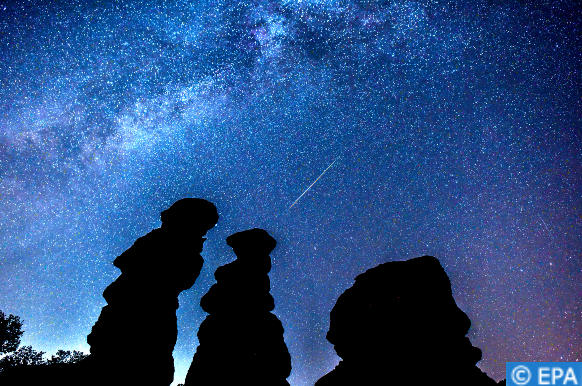NASA’s DART Mission Could Create the First Human-Made Meteor Shower, Lasting 100 Years
Washington, D.C. – Rocky debris from the tiny asteroid Dimorphos, which NASA’s DART spacecraft intentionally collided with in 2022, could lead to the creation of the first human-made meteor shower that could last nearly a century, according to a groundbreaking study.
The Double Asteroid Redirection Test (DART) was carried out by NASA as a critical experiment in planetary defense. The mission aimed to evaluate whether a kinetic impact—essentially ramming a spacecraft into an asteroid at a high speed—could successfully alter the path of a celestial body.
Traveling at 6.1 kilometers per second, the DART spacecraft struck Dimorphos, a moonlet orbiting the larger asteroid Didymos, in a mission that has been closely monitored by astronomers ever since. Ground-based telescopes tracked the impact’s aftermath for nearly two years, and scientists have now confirmed that DART successfully changed Dimorphos’ trajectory.
In addition to shifting the asteroid’s path, the collision also generated over a million kilograms of rocky debris and dust. The ultimate fate of this material remains uncertain, leaving scientists with questions about where it will end up in space.
However, new research suggests that fragments of Dimorphos could pass close to Earth and Mars within the next one to three decades. Some smaller debris might even enter Earth’s atmosphere within ten years, potentially leading to the first meteor shower of human origin.
The study, conducted by an Italian university and soon to be published in the Planetary Science Journal, emphasizes that these debris fragments range in size from tiny particles to pieces as large as smartphones. Despite this, researchers have assured that the debris poses no significant risk to Earth.













